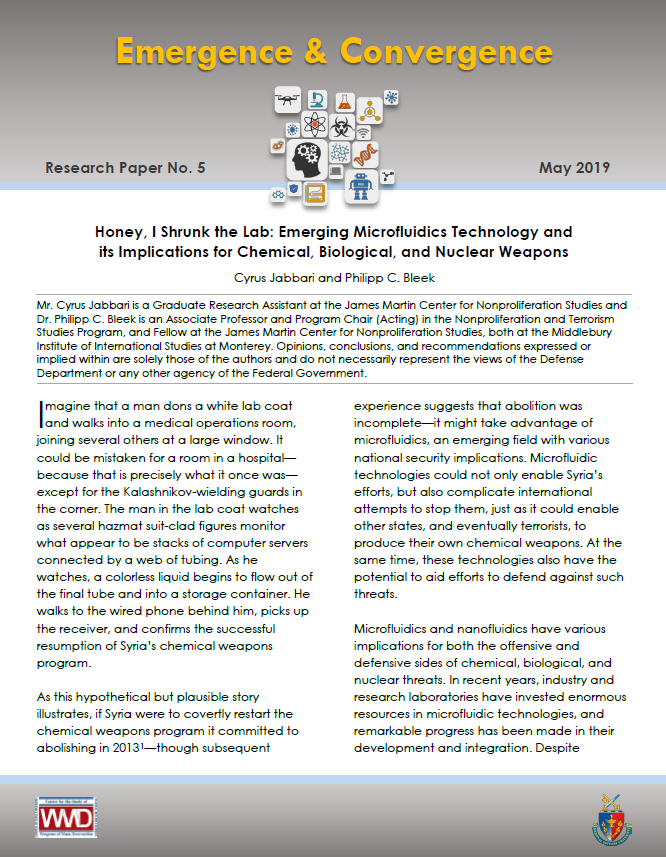 E&C Research Paper no. 5
E&C Research Paper no. 5
Emerging microfluidics technology has significant extant and potential implications for chemical, biological, and nuclear weapons threats. Picture a computer chip, but instead of wires, tiny channels through which liquids flow and mix. Such “lab on a chip” devices enable far greater control over chemical reactions than traditional bulk, batch chemistry. Flow chemistry, including both microfluidics and nanofluidics, is already being used in the chemical, medical, and pharmaceutical industries. The security policy implications have received only modest attention. Potential implications are various, to include the development of novel chemical agents via microfluidic-enable combinatorial chemistry, on-demand production of extremely pure chemical agents in facilities whose small footprints make them easier to hide, more portable chemical and biological agent detectors, and sensors that might better enable International Atomic Energy Agency safeguards on nuclear reprocessing. Emerging microfluidics technology may also interact with other emerging technologies. For example, microfluidics chips can be additively manufactured (3D printed). Or microfluidics-enabled chemical and biological detectors might be small and light enough to be mounted on swarming drones that could characterize a chemically or biologically-contaminated battlefield. Policymakers concerned about CBRN threats have an opportunity to get ahead of, or at least less behind, some of these developments. READ MORE>>>